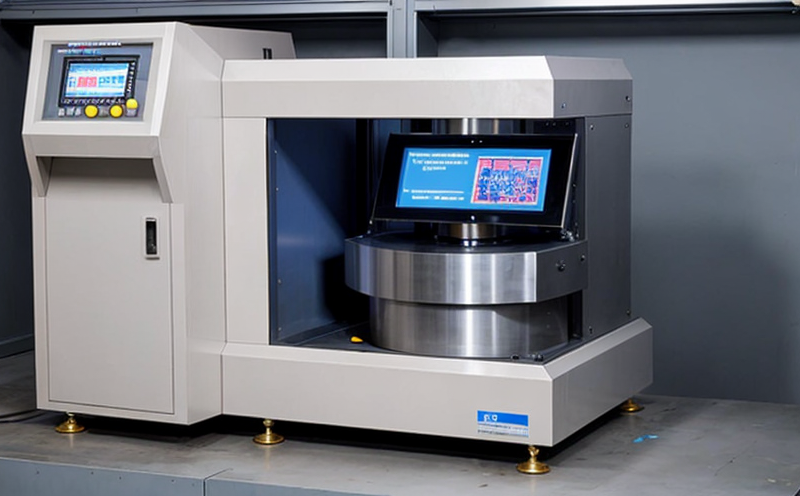ASTM F2971 Dimensional Accuracy Testing for AM Plastics
The ASTM F2971 standard provides a standardized approach to evaluating the dimensional accuracy of 3D printed parts made from thermoplastic materials. This method is crucial in ensuring that manufactured components meet critical design tolerances and perform as expected, especially in sectors like aerospace, automotive, and medical devices.
ASTM F2971 covers various aspects of dimensional accuracy testing for additive manufacturing (AM) plastics, including the selection of reference materials, measurement techniques, and acceptance criteria. The standard is designed to provide a consistent method for quality assurance personnel to ensure that parts produced using AM technologies are dimensionally accurate.
The ASTM F2971 test involves several key steps:
- Specimen Preparation: Specimens must be prepared according to the specific requirements of ASTM F2971. This includes ensuring the correct orientation and support during printing, as well as post-processing procedures such as curing or annealing if necessary.
- Measurement Techniques: The standard specifies the use of coordinate measuring machines (CMMs) for precise measurement of critical dimensions. Other instruments like laser scanners can also be used to capture detailed surface geometry and internal features.
- Data Analysis: Once measurements are taken, data is analyzed using statistical methods to determine compliance with specified tolerances. This includes calculating the mean deviation from nominal dimensions, standard deviations, and other relevant metrics.
- Reporting: The results of these tests must be documented in a comprehensive report that includes all raw measurement data, calculated values, and conclusions regarding conformity or non-conformity to ASTM F2971 requirements.
The ASTM F2971 standard is widely recognized for its rigorous approach to dimensional accuracy testing. It ensures that manufacturers can produce parts with consistent quality, reducing the risk of costly errors and improving overall product reliability.
| Key Parameters | Description |
|---|---|
| Dimensional Tolerances | The allowed deviation from nominal dimensions specified in the design. |
| Measurement Resolution | The precision of the measuring instrument used, typically expressed as a percentage or absolute value. |
| Repeatability | The consistency of repeated measurements under identical conditions. |
| Accuracy | The degree to which measured values agree with true values. |
In summary, ASTM F2971 is an indispensable tool for ensuring dimensional accuracy in 3D printed parts. By adhering to this standard, manufacturers can confidently produce high-quality components that meet critical design requirements and regulatory standards.
Why It Matters
The importance of ASTM F2971 cannot be overstated in the context of additive manufacturing. Dimensional accuracy is a key factor in determining the reliability and performance of 3D printed parts, particularly in sectors where precision is paramount.
- Aerospace Industry: In this sector, even small deviations can lead to catastrophic failures. ASTM F2971 ensures that critical components like engine parts or structural elements are manufactured with the highest level of accuracy.
- Automotive Manufacturing: Automotive components must fit precisely into vehicles. Misalignment due to dimensional inaccuracies can result in functional issues and safety hazards.
- Medical Devices: Medical devices, especially implants, need to be manufactured with exact dimensions to ensure proper function and patient safety.
In addition to these critical applications, ASTM F2971 also plays a role in ensuring that parts are consistent across production runs. This consistency is crucial for maintaining the integrity of large-scale additive manufacturing operations.
The ASTM F2971 standard helps manufacturers identify and correct any issues early in the production process, preventing costly rework or scrap. By adhering to this standard, companies can enhance their reputation for quality and meet stringent industry standards.
Competitive Advantage and Market Impact
By implementing ASTM F2971 Dimensional Accuracy Testing, manufacturers gain several competitive advantages:
- Enhanced Quality Control: The standard provides a robust framework for quality control that helps identify deviations from design specifications early in the process.
- Better Customer Satisfaction: Ensuring dimensional accuracy leads to higher-quality products, which in turn can improve customer satisfaction and loyalty.
- Innovation: With consistent product performance, manufacturers can focus on innovation rather than troubleshooting quality issues.
- Regulatory Compliance: Adherence to ASTM F2971 ensures compliance with international standards, making it easier to meet regulatory requirements in multiple jurisdictions.
- Cost Efficiency: By identifying and correcting errors early, companies can avoid the costs associated with rework or scrap.
The market impact of ASTM F2971 is significant. It sets a high benchmark for quality that customers increasingly expect from suppliers. Companies that adopt this standard can differentiate themselves in competitive markets by delivering consistently high-quality products. This can lead to increased market share and greater customer trust.
Use Cases and Application Examples
| Use Case | Description |
|---|---|
| Aerospace Engine Parts | Critical engine parts, such as turbine blades or nozzles, are dimensionally tested to ensure they fit precisely and operate efficiently. |
| Medical Implants | Implants like hip replacements must be manufactured with exact dimensions for proper fit and function within the body. |
| Automotive Parts | Parts such as gears or connectors need to be dimensionally accurate to ensure proper assembly into vehicles. |
| Consumer Electronics | Small components like connectors and sockets must fit precisely for the functionality of electronic devices. |
The ASTM F2971 standard is particularly relevant in additive manufacturing due to its ability to provide consistent results across different production methods. This ensures that parts from various AM processes meet the same stringent accuracy standards, enhancing the reliability and performance of end products.





